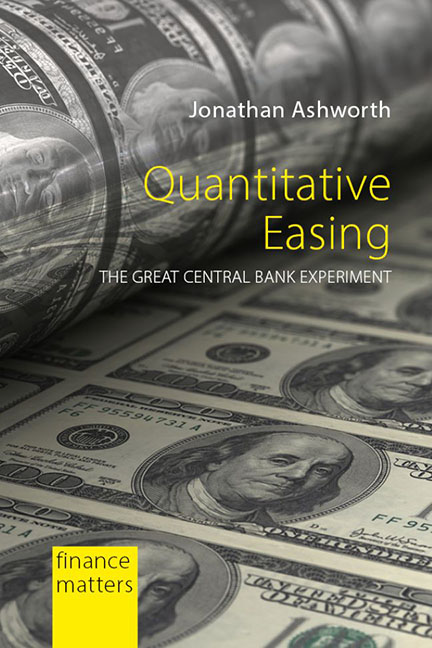Book contents
- Frontmatter
- Contents
- Preface and acknowledgements
- Abbreviations
- Foreword
- 1 Monetary policy-making since the end of Bretton Woods
- 2 Key monetary policy trends and events in the decades before the Great Financial Crisis
- 3 The Great Financial Crisis and the onset of quantitative easing
- 4 How quantitative easing works
- 5 Measuring the effectiveness and impact of quantitative easing
- 6 International spillovers of quantitative easing
- 7 Criticisms and negative externalities of quantitative easing
- 8 Exiting quantitative easing and policies for the next slowdown
- Conclusion
- Notes
- References
- Index
4 - How quantitative easing works
Published online by Cambridge University Press: 20 December 2023
- Frontmatter
- Contents
- Preface and acknowledgements
- Abbreviations
- Foreword
- 1 Monetary policy-making since the end of Bretton Woods
- 2 Key monetary policy trends and events in the decades before the Great Financial Crisis
- 3 The Great Financial Crisis and the onset of quantitative easing
- 4 How quantitative easing works
- 5 Measuring the effectiveness and impact of quantitative easing
- 6 International spillovers of quantitative easing
- 7 Criticisms and negative externalities of quantitative easing
- 8 Exiting quantitative easing and policies for the next slowdown
- Conclusion
- Notes
- References
- Index
Summary
The initial rounds of QE in the major Western economies gained significant attention well beyond just the financial press, likely reflecting its reputation as such a “nuclear” policy option and given that some observers were suggesting that central banks were engaged in “money printing” which would ultimately fuel runaway inflation as in Weimar Germany or Zimbabwe. Indeed, various newspaper cartoons depicted central bankers distributing large amounts of banknotes to the general public either by throwing them into the air or shovelling them into sacks (see Figure 4.1). There has even been a Barry White-style themed song made about QE and a highly critical cartoon around the time of US QE2 has gained over six million views (the cartoon's creator has subsequently acknowledged that most of his criticisms have proved incorrect!).
It must be acknowledged that any economist recommending QE's use in western economies prior to the GFC would have been considered rather dangerous, but with hindsight many of the well-publicized fears surrounding QE now appear overblown (although, as I discuss later, it is still too early to make a definitive judgement on whether they may ultimately transpire). At the same time, while it was undoubtedly crucial in helping to end the downward spiral in economies during the GFC and supporting growth subsequently, it has not proved quite as powerful an economic tool as many had initially expected. Summarizing his opinion on the experimentation with unconventional monetary policies at a 2015 IMF conference, Nobel Laureate Paul Krugman suggested “the bad stuff unpersuasive, the good stuff maybe, but not really compelling, this has just not turned out to be the game changing policy tool that people had expected”.
In this chapter, I examine the practical and theoretical channels through which QE works. In Chapter 5, I examine the actual financial and economic impacts in the major countries in which it was deployed and, in Chapter 6, I analyze the international spillovers. In Chapter 7, I discuss the feared side-effects and other potential negative externalities.
- Type
- Chapter
- Information
- Quantitative EasingThe Great Central Bank Experiment, pp. 55 - 68Publisher: Agenda PublishingPrint publication year: 2020



